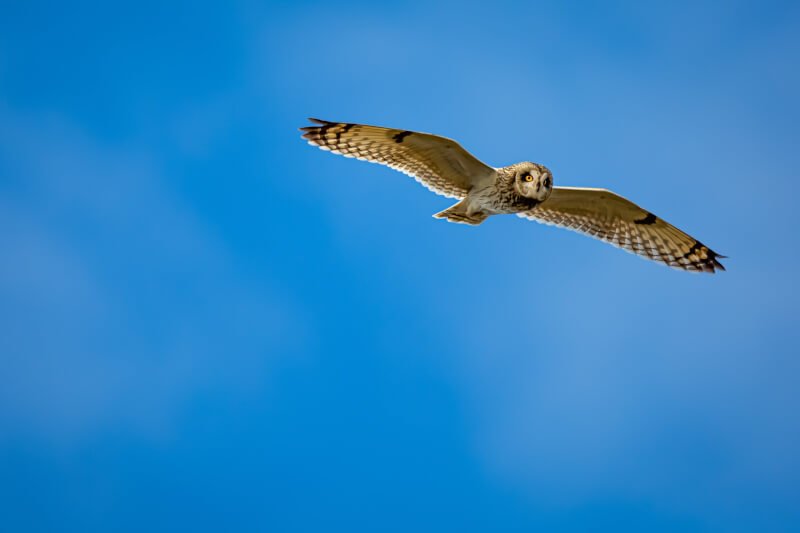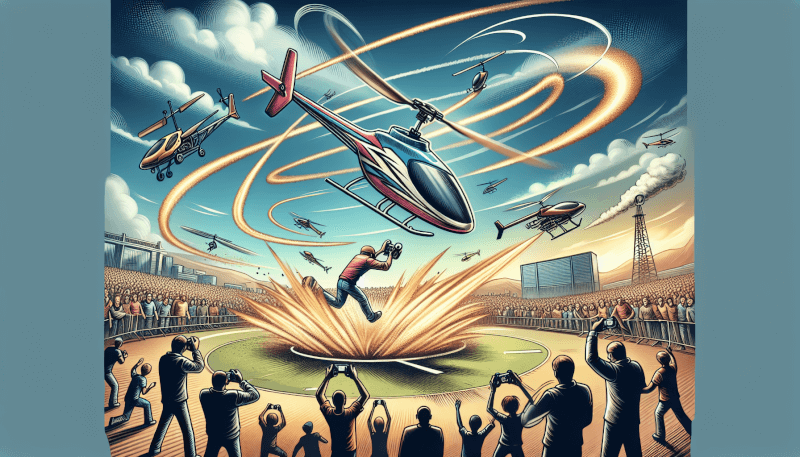So, you’ve finally mastered the art of flying your RC helicopter and you’re ready to take your skills to the next level? Well, get ready to be amazed because in this article, we’re going to show you the secrets to performing jaw-dropping aerial stunts with your RC heli. From flips and rolls to loops and inverted flight, we’ll provide you with step-by-step instructions and insider tips that will have you impressing your friends and wowing the crowds in no time. So, buckle up, get your heli ready, and prepare to take off into the thrilling world of aerial stunts!
Choosing the Right RC Heli
When it comes to choosing the right RC heli for performing aerial stunts, it’s important to consider your skill level. If you’re a beginner, it’s best to start with a basic and easy-to-control model. These helis are typically designed for beginners and are equipped with features that make them more stable and easier to maneuver. On the other hand, if you have some experience flying RC helis and feel confident in your skills, you can opt for a more advanced model that offers more control and agility.
Another factor to consider when choosing an RC heli is the appropriate size. Different helis come in various sizes, ranging from small ones that can be flown indoors to larger ones that are better suited for outdoor flying. If you’re a beginner, it’s generally recommended to start with a smaller heli as they are easier to control and maneuver. As you gain more experience and confidence, you can move on to larger helis which offer better stability and performance in outdoor settings.
Finally, if you’re interested in performing 3D stunts with your RC heli, it’s essential to choose a model that has 3D capability. 3D helis are specially designed for extreme maneuvers and aerobatics, allowing you to perform tricks like flips, rolls, and inverted flight. These helis usually have a higher power-to-weight ratio and more responsive controls, making them ideal for advanced pilots who want to push their skills to the limit.
Understanding the Controls
Before you can start performing aerial stunts with your RC heli, it’s crucial to have a good understanding of the controls. RC helis have both basic and advanced controls that you need to be familiar with to execute the desired maneuvers.
Knowing the basic controls is the first step in mastering your RC heli. These controls typically include throttle, elevator, aileron, and rudder. The throttle controls the speed of the main rotor, while the elevator controls the pitch of the main rotor blades, affecting the helicopter’s altitude. The aileron controls the heli’s roll, allowing you to tilt it to the left or right, while the rudder controls the helicopter’s yaw, enabling you to rotate it clockwise or counterclockwise.
Once you have a good grasp of the basic controls, you can move on to learning about advanced controls. Advanced controls include collective pitch and cyclic pitch. Collective pitch controls the angle of the main rotor blades simultaneously, enabling you to control the heli’s ascent, descent, and vertical movements. Cyclic pitch controls the main rotor blade pitch individually, allowing you to control the heli’s movements in all directions. Understanding and mastering these advanced controls will give you more freedom and precision in executing complex aerial stunts.
To enhance your skills and gain more confidence in performing aerial stunts, it’s highly recommended to practice on a simulator. RC heli simulators replicate the experience of flying a real heli and provide a safe environment for practicing various maneuvers. They allow you to refine your control skills, experiment with different stunts, and get a feel for how your heli will respond in different situations. Spending time on a simulator before attempting stunts in real life can significantly improve your flying abilities and minimize the risk of crashes or accidents.

Mastering Basic Stunts
Once you have developed a good understanding of the controls and have practiced on a simulator, it’s time to start mastering some basic stunts with your RC heli. These stunts will serve as building blocks for more advanced maneuvers and will help you become more comfortable with your heli’s capabilities.
To begin, start with simple maneuvers such as flying in circles or figure eights. These maneuvers will help you gain confidence in controlling the heli’s altitude, speed, and directional changes. As you become more comfortable, you can progress to performing loops and rolls. A loop involves flying the heli in a vertical circle, while a roll requires tilting the heli sideways and rotating it along its longitudinal axis. These stunts add an exciting element to your flying and allow you to showcase your skills.
Another essential skill to master is hovering and slow flight. Hovering requires precise control of the heli’s throttle, elevator, and rudder to maintain a stable position in the air. Slow flight involves flying the heli at a lower speed and maintaining steady control. Practicing hovering and slow flight will help you develop a better feel for your heli’s responsiveness and will lay the foundation for more advanced stunts.
Exploring Advanced Stunts
Once you have built a solid foundation with basic stunts, it’s time to explore more advanced maneuvers with your RC heli. These stunts will challenge your skills and push the limits of what you can do with your heli.
One of the first advanced stunts to try is inverted flight. In inverted flight, the heli is flown upside down, with the main rotor blades facing down. This requires excellent control and coordination as the controls are reversed. Executing inverted flight will test your ability to handle the heli’s controls in a different orientation and will add an impressive flair to your stunts.
Another advanced stunt worth attempting is a knife-edge. A knife-edge is a maneuver where the heli is flown sideways, with one side of the heli facing the ground. This stunt requires precise control of the aileron and elevator controls to maintain the heli’s balance and stability while flying in this position. Mastering the knife-edge will demonstrate your advanced piloting skills and add a unique visual element to your aerial performances.
For those looking to take their stunts to the next level, attempting tic tocs is a thrilling challenge. Tic tocs involve rapidly alternating between positive and negative pitch while maintaining a continuous cyclic input. This creates a “ticking” motion as the heli transitions between climbing and descending. Mastering tic tocs requires excellent control, timing, and coordination between the cyclic and collective pitch controls.

Performing Flips and Spins
Performing flips and spins with your RC heli is a sure way to impress spectators and add excitement to your flying sessions. These maneuvers require precise control, timing, and coordination to execute properly.
Learning how to flip your heli involves rotating it along its lateral axis while maintaining control and stability. To perform a flip, you need to apply negative collective pitch and aileron input to initiate the rotation. As the heli flips, you must smoothly transition to positive collective pitch and opposite aileron input to recover and maintain control. Mastering flips will allow you to showcase your heli’s agility and your piloting skills.
Experimenting with spinning maneuvers is another way to add dynamic movement to your stunts. Spins can be executed in both horizontal and vertical orientations, with the heli rotating either on its yaw or roll axis. It’s essential to practice different types of spins, such as pirouetting, funneling, and autorotational spins, to expand your repertoire of stunts. Each spin requires specific control inputs and timing, and mastering these maneuvers will give you more options for creating visually stunning aerial displays.
Combining flips and spins is the pinnacle of aerial stunts with your RC heli. By seamlessly transitioning between flips and spins, you can create a breathtaking display of acrobatics. These complex maneuvers require precise control, timing, and spatial awareness to execute flawlessly. With practice and dedication, you can develop the skills necessary to perform these mind-blowing combinations and leave your audience in awe.
Executing Aerobatic Maneuvers
Aerobatic maneuvers are the epitome of RC heli stunts, showcasing the full capabilities of your heli and your piloting skills. These maneuvers require a high level of control, precision, and confidence to execute successfully.
One popular aerobatic maneuver to try is the stall turn. A stall turn involves climbing vertically into the sky, cutting the throttle, and performing a half-loop. As the heli reaches the peak of the climb, you must perform a 180-degree rotation around its yaw axis and then descend vertically. Executing a stall turn with precision requires excellent coordination between throttle, elevator, and rudder controls.
Another aerobatic maneuver to attempt is the split S. A split S involves flying inverted and then performing a half-loop downward, transitioning back to normal flight orientation. This maneuver requires careful control and coordination to maintain stability throughout the transition from inverted flight to upright flight.
For those seeking a more challenging aerobatic maneuver, executing a hurricane will test your skills to the limit. A hurricane involves a combination of rolling, flipping, and spinning maneuvers, all performed in rapid succession. This advanced maneuver requires a high level of control, timing, and spatial awareness, making it a true test of your piloting abilities.

Using Collective Pitch
Utilizing the collective pitch system in your RC heli opens up a whole new world of stunts and maneuvers. Collective pitch allows you to control the angle of all the main rotor blades simultaneously, enabling more advanced flight characteristics and dynamic movements.
To understand the collective pitch system, imagine how the blades of a real helicopter work. The collective pitch allows you to change the angle of the blades, which affects lift and consequently altitude control. By adjusting the collective pitch, you can control the heli’s ascent, descent, and vertical movements more precisely.
Once you have a good understanding of the collective pitch system, you can start practicing various collective pitch maneuvers. These maneuvers include climbing and descending vertically, performing pirouettes, and executing inverted flight with collective pitch. Each collective pitch maneuver requires a different combination of control inputs and timing, and practicing them will help you explore the full potential of your heli and expand your repertoire of stunts.
Perfecting 3D Stunts
If you’re looking to take your aerial stunts to the next level, 3D flying is the way to go. 3D flying involves extreme aerobatics and maneuvers that push both you and your RC heli to the limit.
To start, it’s crucial to learn about 3D flying and understand the principles behind it. 3D flying focuses on exploiting all the available control inputs and flight characteristics of your heli to perform seemingly impossible maneuvers. This includes complex flips, rolls, inverted flight, and even hovering sideways.
Executing popular 3D maneuvers such as piro-flips, tic tocs, and hurricanes will require mastery of both basic and advanced controls. These maneuvers combine elements of flips, spins, and inverted flight to create visually stunning and jaw-dropping aerial displays. Practice and repetition are key to perfecting these maneuvers, so don’t be discouraged if it takes time to nail them down.
While 3D flying is undoubtedly challenging, precision flying is equally important. Precision flying involves maintaining strict control and accuracy throughout your stunts and maneuvers. This means executing each trick with precision and consistency, ensuring smooth transitions, and displaying excellent spatial awareness. Precision flying showcases your mastery of control and adds an extra layer of finesse to your aerial performances.

Safety Tips for Aerial Stunts
Performing aerial stunts with your RC heli can be an exhilarating and rewarding experience, but it’s essential to prioritize safety. Here are some safety tips to keep in mind:
Choose an open area for flying: Make sure you have plenty of space around you to safely maneuver your heli without the risk of crashing into obstacles or people. Avoid flying near power lines, trees, or crowded areas.
Maintain a safe distance: Keep a safe distance between your heli and yourself, as well as any spectators. Accidents can happen, and it’s crucial to minimize the risk of injury or damage to property.
Use safety gear and protective measures: Wear safety goggles or glasses to protect your eyes from debris or rotor strikes. Additionally, consider using propeller guards and other protective measures to minimize the risk of damage to your heli and surrounding objects in the event of a crash.
Remember, safety should be your number one priority while performing aerial stunts. Always be aware of your surroundings, fly responsibly, and follow any local regulations or restrictions on flying RC helis.
Troubleshooting Stunt Performance
Even the most experienced pilots encounter issues with their RC helis from time to time. Here are some common issues you may come across when performing stunts and possible solutions:
Loss of control or erratic behavior: If your heli becomes unresponsive or exhibits erratic behavior, the first thing to check is the battery. Low battery voltage can affect the performance and responsiveness of your heli. Ensure that your batteries are properly charged before flying.
Vibrations or excessive noise: Excessive vibrations or unusual noise during flight can indicate loose connections or damaged components. Check all the connectors, screws, and blades to ensure they are secure and properly tightened. If the issue persists, consult a professional for further inspection.
Inconsistent flips or spins: If your flips or spins are not consistent or smooth, it may be due to improper control inputs or incorrect setup. Make sure you have calibrated your controls correctly and that the heli’s blades are balanced. Consult the user manual for specific instructions on setting up your heli for stunts.
If you encounter any issues that you can’t troubleshoot or resolve on your own, it’s always a good idea to seek professional help. RC helis can be complex machines, and experienced technicians can diagnose and fix problems more efficiently, ensuring the safety and performance of your heli.
Performing aerial stunts with your RC heli is an exciting and rewarding hobby. By choosing the right heli, understanding and mastering the controls, and progressively learning and practicing stunts, you can become a skilled pilot capable of executing impressive maneuvers. Remember to prioritize safety, follow the guidelines and tips provided, and most importantly, have fun pushing the boundaries of what your RC heli can do!



